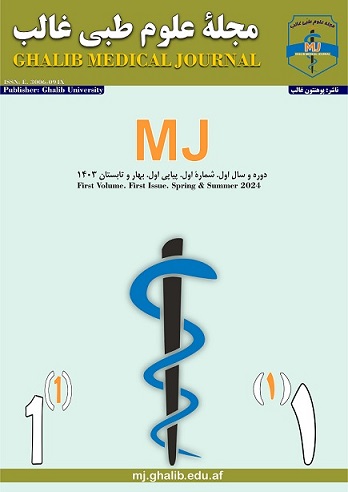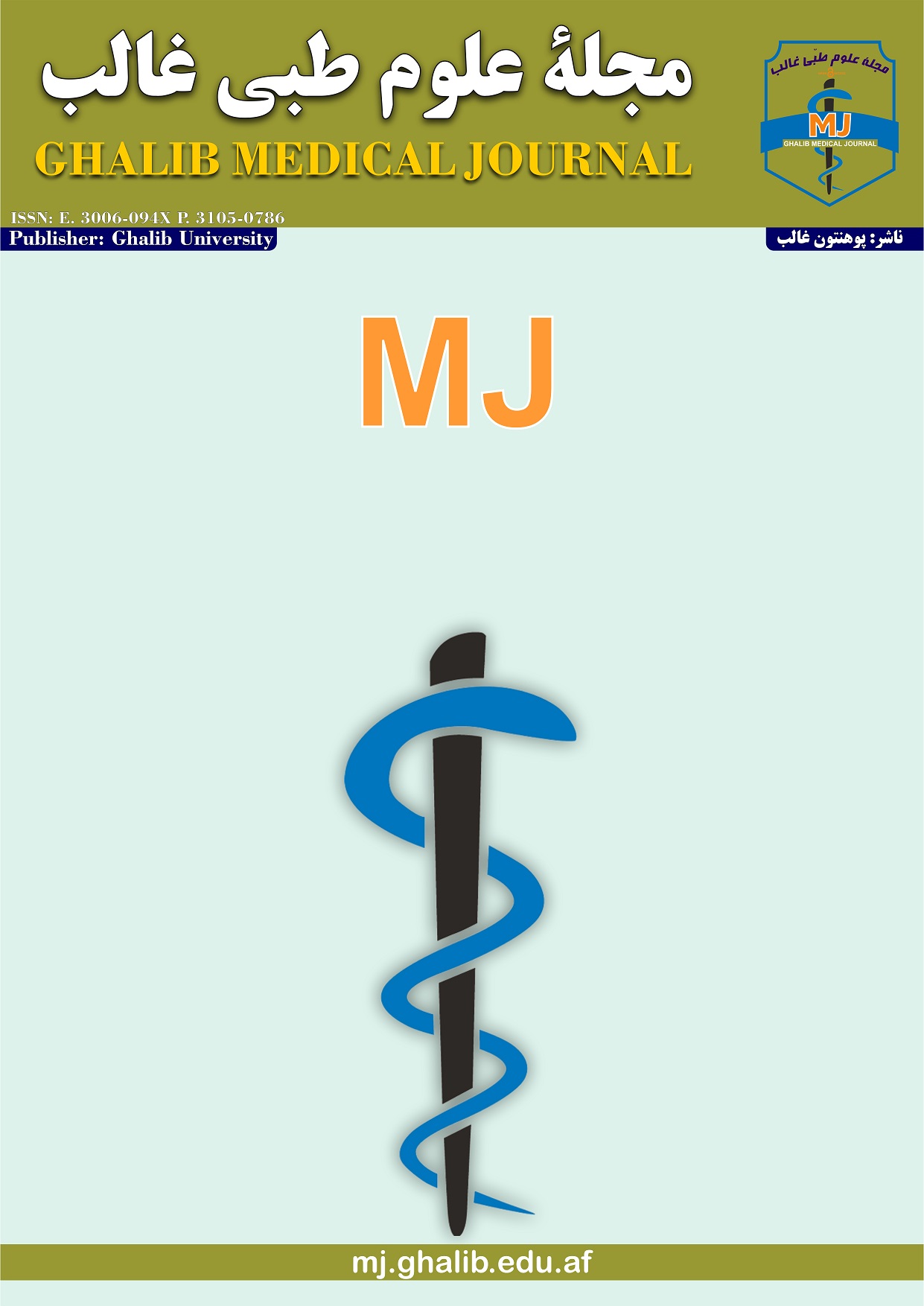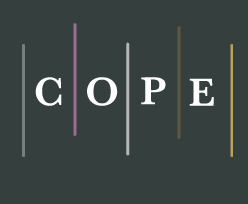چالشزایی فنآوریهای نوین: کاوش بر پیآمدهای روانی - اجتماعی فنآوریهای نوین بر نوجوانان و جوانان، یک چالش صحتعامهیی نوظهور
DOI::
https://doi.org/10.58342/ghalibMj.V.1.I.1.2کلمات کلیدی:
فنآوریهای نوین, چالشها, پیآمدهای روانی-اجتماعی, چالش صحت عامهییچکیده
زمینه و هدف: در سالهای اخیر، پیشرفتها و تحولات درحوزۀ فنآوری جدید، انقلابی را در روشهای ارتباطی و تعاملی نوجوانان با دنیای اطراف بهوجود آورده است. با گسترش روزافزون سکوهای رسانههای اجتماعی، مانندِ فیسبوک، اینستاگرام و اسنپچت، نگرانیها دربارۀ نقش و تأثیر این ابزارها بر توسعه و رفتار نوجوانان نیز افزایش یافته است. در پژوهش مروری، تأثیرات روانی-اجتماعی استفاده از رسانههای اجتماعی و فنآوریهای نوین بر نوجوانان را به بررسی گرفتهایم، و پیآمدهای مرتبط با تصور بدنی و اندام، اجتماعیسازی و توسعۀ نوجوانان مورد بررسی قرار میگیرد. راهکارهایی که پزشکان و والدین میتوانند اتخاذ کنند تا فرزندان خود را از تهدیدات ممکن، که توسط رسانههای دیجیتال ایجاد میشود بهخصوص مطالب پورنوگرافی یا هرزهنگاری محافظت کنند، مورد بحث قرار گرفته است.
روش بررسی: این مقاله بهشکل مروری اجرا شده و از مقالههای منتشرشده در سایتهای علمییی چون پابمِد، اسکوپوس و گوگلاسکالر بهرهجویی شده و در بخش جاسازی منابع از نرمافزار زوترو Zotero استفاده بهعمل آمدهاست.
یافتهها: درحالیکه سکوهای رسانههای اجتماعی به محبوبیت بالایی دست یافتهاند، شواهد متنوعی نشان میدهد که ارتباط معناداری بین استفاده از آنها و مسائل روانشناختی و رفتاری نوجوانان وجود دارد. افزایش استفاده از رسانههای اجتماعی با کاهش اعتماد بهنفس و رضایت از بدن، افزایش خطر قُلدری سایبری، افزایش تماس با مطالب پورنوگرافی و رفتارهای جنسی خطرناک مرتبط شده است.
نتیجهگیری: باتوجه به اینکه فنآوری جدید نوجوانان را بهطور پایدار در زندهگی روزمره تحت تأثیر قرار میدهد، نیاز به تلاشهای بیشتری برای آگاهسازی کاربران نوجوان و خانوادههایشان از پیآمدهای منفی استفاده از رسانههای اجتماعی احساس میشود. پزشکان و والدین باید اقدامات احتیاطی را انجام دهند تا خطرات روانیِ اجتماعی را کاهش دهند و امنیت آنلاین نوجوانان را تضمین کنند.
مراجع
Lenhart A. Teens, social media & technology overview 2015. 2015;
Brown BB, Larson J, others. Peer relationships in adolescence. Handb Adolesc Psychol. 2009;2(Pt I):74–104.
Burrow AL, Rainone N. How many likes did I get?: Purpose moderates links between positive social media feedback and self-esteem. J Exp Soc Psychol. 2017;69:232–6.
Baumeister RF, Campbell JD, Krueger JI, Vohs KD. Does high self-esteem cause better performance, interpersonal success, happiness, or healthier lifestyles? Psychol Sci Public Interest. 2003;4(1):1–44.
Vogel EA, Rose JP, Roberts LR, Eckles K. Social comparison, social media, and self-esteem. Psychol Pop Media Cult. 2014;3(4):206.
De Vries DA, Kühne R. Facebook and self-perception: Individual susceptibility to negative social comparison on Facebook. Personal Individ Differ. 2015;86:217–21.
Valkenburg PM, Piotrowski JT. Plugged in: How media attract and affect youth. Yale University Press; 2017.
Bányai F, Zsila Á, Király O, Maraz A, Elekes Z, Griffiths MD, et al. Problematic social media use: Results from a large-scale nationally representative adolescent sample. PloS One. 2017;12(1):e0169839.
Collins WA, Steinberg L. Adolescent development in interpersonal context. Child Adolesc Dev Adv Course. 2008;551–90.
Becker AE. Television, disordered eating, and young women in Fiji: Negotiating body image and identity during rapid social change. Cult Med Psychiatry. 2004;28:533–59.
Lee SY. How do people compare themselves with others on social network sites?: The case of Facebook. Comput Hum Behav. 2014;32:253–60.
Valkenburg PM, Koutamanis M, Vossen HG. The concurrent and longitudinal relationships between adolescents’ use of social network sites and their social self-esteem. Comput Hum Behav. 2017;76:35–41.
Liu D, Baumeister RF. Social networking online and personality of self-worth: A meta-analysis. J Res Personal. 2016;64:79–89.
Steinfield C, Ellison NB, Lampe C. Social capital, self-esteem, and use of online social network sites: A longitudinal analysis. J Appl Dev Psychol. 2008;29(6):434–45.
Wilcox K, Stephen AT. Are close friends the enemy? Online social networks, self-esteem, and self-control. J Consum Res. 2013;40(1):90–103.
Brighi A, Melotti G, Guarini A, Genta ML, Ortega R, Mora-Merchán J, et al. Self-esteem and loneliness in relation to cyberbullying in three European countries. Cyberbullying Glob Play Res Int Perspect. 2012;32–56.
Greitemeyer T, Mügge DO, Bollermann I. Having responsive Facebook friends affects the satisfaction of psychological needs more than having many Facebook friends. Basic Appl Soc Psychol. 2014;36(3):252–8.
Clay D, Vignoles VL, Dittmar H. Body image and self-esteem among adolescent girls: Testing the influence of sociocultural factors. J Res Adolesc. 2005;15(4):451–77.
Moradi B, Dirks D, Matteson AV. Roles of sexual objectification experiences and internalization of standards of beauty in eating disorder symptomatology: a test and extension of objectification theory. J Couns Psychol. 2005;52(3):420.
Hinduja S, Patchin JW. Bullying, cyberbullying, and suicide. Arch Suicide Res. 2010;14(3):206–21.
Vandebosch H, Van Cleemput K. Defining cyberbullying: A qualitative research into the perceptions of youngsters. Cyberpsychol Behav. 2008;11(4):499–503.
Davis S, Nixon C. Preliminary results from the Youth Voice research project: Victimization & strategies. Youth Voice Proj. 2010;
Snider M, Borel K. Stalked by a cyberbully. Maclean’s. 2004;117(21/22):76–7.
Hinduja S, Patchin J. Cyberbullying Data. Cyberbullying Research Center. 2016.
Llorent VJ, Ortega-Ruiz R, Zych I. Bullying and cyberbullying in minorities: Are they more vulnerable than the majority group? Front Psychol. 2016;7:1507.
Schenk AM, Fremouw WJ. Prevalence, psychological impact, and coping of cyberbully victims among college students. J Sch Violence. 2012;11(1):21–37.
Pham T, Adesman A. Teen victimization: Prevalence and consequences of traditional and cyberbullying. Curr Opin Pediatr. 2015;27(6):748–56.
Van Geel M, Vedder P, Tanilon J. Relationship between peer victimization, cyberbullying, and suicide in children and adolescents: a meta-analysis. JAMA Pediatr. 2014;168(5):435–42.
Lynam DR, Milich R, Zimmerman R, Novak SP, Logan T, Martin C, et al. Project DARE: no effects at 10-year follow-up. 2009;
Kuntsche E, Knibbe R, Gmel G, Engels R. Why do young people drink? A review of drinking motives. Clin Psychol Rev. 2005;25(7):841–61.
Sabina C, Wolak J, Finkelhor D. The nature and dynamics of internet pornography exposure for youth. Cyberpsychol Behav. 2008;11(6):691–3.
Mitchell KJ, Jones LM, Finkelhor D, Wolak J. Trends in unwanted online experiences and sexting. 2014;
Arrington-Sanders R, Harper GW, Morgan A, Ogunbajo A, Trent M, Fortenberry JD. The role of sexually explicit material in the sexual development of same-sex-attracted Black adolescent males. Arch Sex Behav. 2015;44:597–608.
Rothman EF, Kaczmarsky C, Burke N, Jansen E, Baughman A. “Without porn… I wouldn’t know half the things I know now”: A qualitative study of pornography use among a sample of urban, low-income, black and Hispanic youth. J Sex Res. 2015;52(7):736–46.
Flood M. The harms of pornography exposure among children and young people. Child Abuse Rev J Br Assoc Study Prev Child Abuse Negl. 2009;18(6):384–400.
Bilgrami Z, McLAUGHLIN L, Milanaik R, Adesman A. Health implications of new-age technologies: a systematic review. Minerva Pediatr. 2017;69(4):348–67.
Ybarra ML, Mitchell KJ, Hamburger M, Diener-West M, Leaf PJ. X-rated material and perpetration of sexually aggressive behavior among children and adolescents: Is there a link? Aggress Behav. 2011;37(1):1–18.
Owens EW, Behun RJ, Manning JC, Reid RC. The impact of internet pornography on adolescents: A review of the research. Sex Addict Compulsivity. 2012;19(1–2):99–122.
Häggström-Nordin E, Hanson U, Tydén T. Associations between pornography consumption and sexual practices among adolescents in Sweden. Int J STD AIDS. 2005;16(2):102–7.
Peter J, Valkenburg PM. Adolescents’ exposure to sexually explicit internet material and notions of women as sex objects: Assessing causality and underlying processes. J Commun. 2009;59(3):407–33.
Jacobson C, Bailin A, Milanaik R, Adesman A. Adolescent health implications of new age technology. Pediatr Clin. 2016;63(1):183–94.
Braun-Courville DK, Rojas M. Exposure to sexually explicit web sites and adolescent sexual attitudes and behaviors. J Adolesc Health. 2009;45(2):156–62.
Kingston DA, Malamuth NM, Fedoroff P, Marshall WL. The importance of individual differences in pornography use: Theoretical perspectives and implications for treating sexual offenders. J Sex Res. 2009;46(2–3):216–32.
Lenhart A, Ling R, Campbell S, Purcell K. Teens and mobile phones: Text messaging explodes as teens embrace it as the centerpiece of their communication strategies with friends. Pew Internet Am Life Proj. 2010;
Rice E, Rhoades H, Winetrobe H, Sanchez M, Montoya J, Plant A, et al. Sexually explicit cell phone messaging associated with sexual risk among adolescents. Pediatrics. 2012;130(4):667–73.
Houck CD, Barker D, Rizzo C, Hancock E, Norton A, Brown LK. Sexting and sexual behavior in at-risk adolescents. Pediatrics. 2014;133(2):e276–82.
Dake JA, Price JH, Maziarz L, Ward B. Prevalence and correlates of sexting behavior in adolescents. Am J Sex Educ. 2012;7(1):1–15.
چاپ شده
ارجاع به مقاله
شماره
نوع مقاله
مجوز
حق نشر 2024 محمد مسعودی, علی رحیمی, عنایتالله عجاز

این پروژه تحت مجوز بین المللی Creative Commons Attribution 4.0 می باشد.










